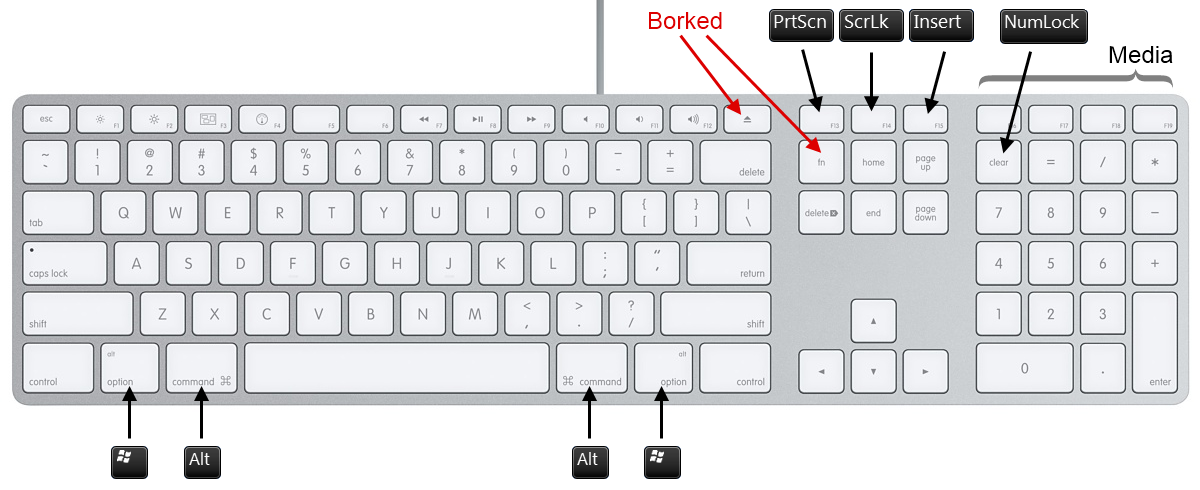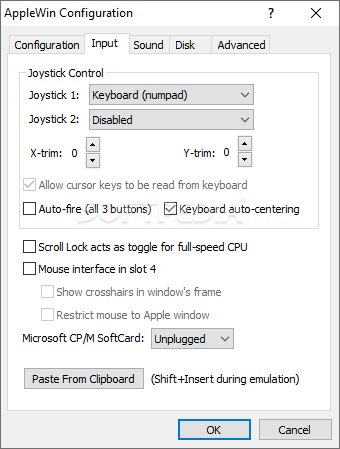
- #Applewin keyboard clayout full#
- #Applewin keyboard clayout windows 10#
- #Applewin keyboard clayout tv#
- #Applewin keyboard clayout windows#
Key features are:Īll 128 ASCII characters can be generated including Upper and Lower case.
#Applewin keyboard clayout full#
Nearly 400,000 subscribers received the newsletter complete with a handwritten tip every day.The latest project I have completed is a full ASCII Upper/Lower case keyboard that can be used on an Apple 1 or Apple II or other computer requiring a parallel interface.
#Applewin keyboard clayout windows#
He gave advice on dark web scans on Miami's NBC 6, discussed Windows XP's demise on WGN-TV's Midday News in Chicago, and shared his CES experiences on WJR-AM's Guy Gordon Show in Detroit.Ĭhris also ran MakeUseOf's email newsletter for two years.
#Applewin keyboard clayout tv#
In addition to his extensive writing experience, Chris has been interviewed as a technology expert on TV news and radio shows. The company's project was later reportedly shut down by the U.S. A wave of negative publicity ensued, with coverage on BuzzFeed News, CNBC, the BBC, and TechCrunch. At CES 2018, he broke the news about Kodak's "KashMiner" Bitcoin mining scheme with a viral tweet.

Starting in 2015, Chris attended the Computer Electronics Show (CES) in Las Vegas for five years running.

His work has even appeared on the front page of Reddit.Īrticles he's written have been used as a source for everything from books like Team Human by Douglas Rushkoff, media theory professor at the City University of New York's Queens College and CNN contributor, to university textbooks and even late-night TV shows like Comedy Central's with Chris Hardwick.
#Applewin keyboard clayout windows 10#
His roundups of new features in Windows 10 updates have been called "the most detailed, useful Windows version previews of anyone on the web" and covered by prominent Windows journalists like Paul Thurrott and Mary Jo Foley on TWiT's Windows Weekly. Instructional tutorials he's written have been linked to by organizations like The New York Times, Wirecutter, Lifehacker, the BBC, CNET, Ars Technica, and John Gruber's Daring Fireball. The news he's broken has been covered by outlets like the BBC, The Verge, Slate, Gizmodo, Engadget, TechCrunch, Digital Trends, ZDNet, The Next Web, and Techmeme. Beyond the column, he wrote about everything from Windows to tech travel tips. He founded PCWorld's "World Beyond Windows" column, which covered the latest developments in open-source operating systems like Linux and Chrome OS. He also wrote the USA's most-saved article of 2021, according to Pocket.Ĭhris was a PCWorld columnist for two years. Beyond the web, his work has appeared in the print edition of The New York Times (September 9, 2019) and in PCWorld's print magazines, specifically in the August 2013 and July 2013 editions, where his story was on the cover. With over a decade of writing experience in the field of technology, Chris has written for a variety of publications including The New York Times, Reader's Digest, IDG's PCWorld, Digital Trends, and MakeUseOf. Chris has personally written over 2,000 articles that have been read more than one billion times-and that's just here at How-To Geek.

QWERTY is a layout designed so the keys you use while typing are far apart from each other.Ĭhris Hoffman is the former Editor-in-Chief of How-To Geek. The layout that they came up with is basically the same as the QWERTY layout we use today. The letters on the keyboard had to be rearranged so you'd be pressing keys far apart from each other when you typed, minimizing the frequency of typewriter jams. If you pressed keys next to each other in quick succession, the bars would collide with each other and the keys would jam. Whenever you pressed a key, the appropriate bar would swing from the edge of the ring and hit the paper in the center. In the four-row arrangement, these bars were arranged on the outside of a circular ring. Whenever you pressed a key, the bar the key was attached to would hit the piece of paper, printing the letter on the paper.

The original layout for the typewriter used keys arranged in alphabetical order. QWERTY Began With Typewriters in the 1800's


 0 kommentar(er)
0 kommentar(er)
